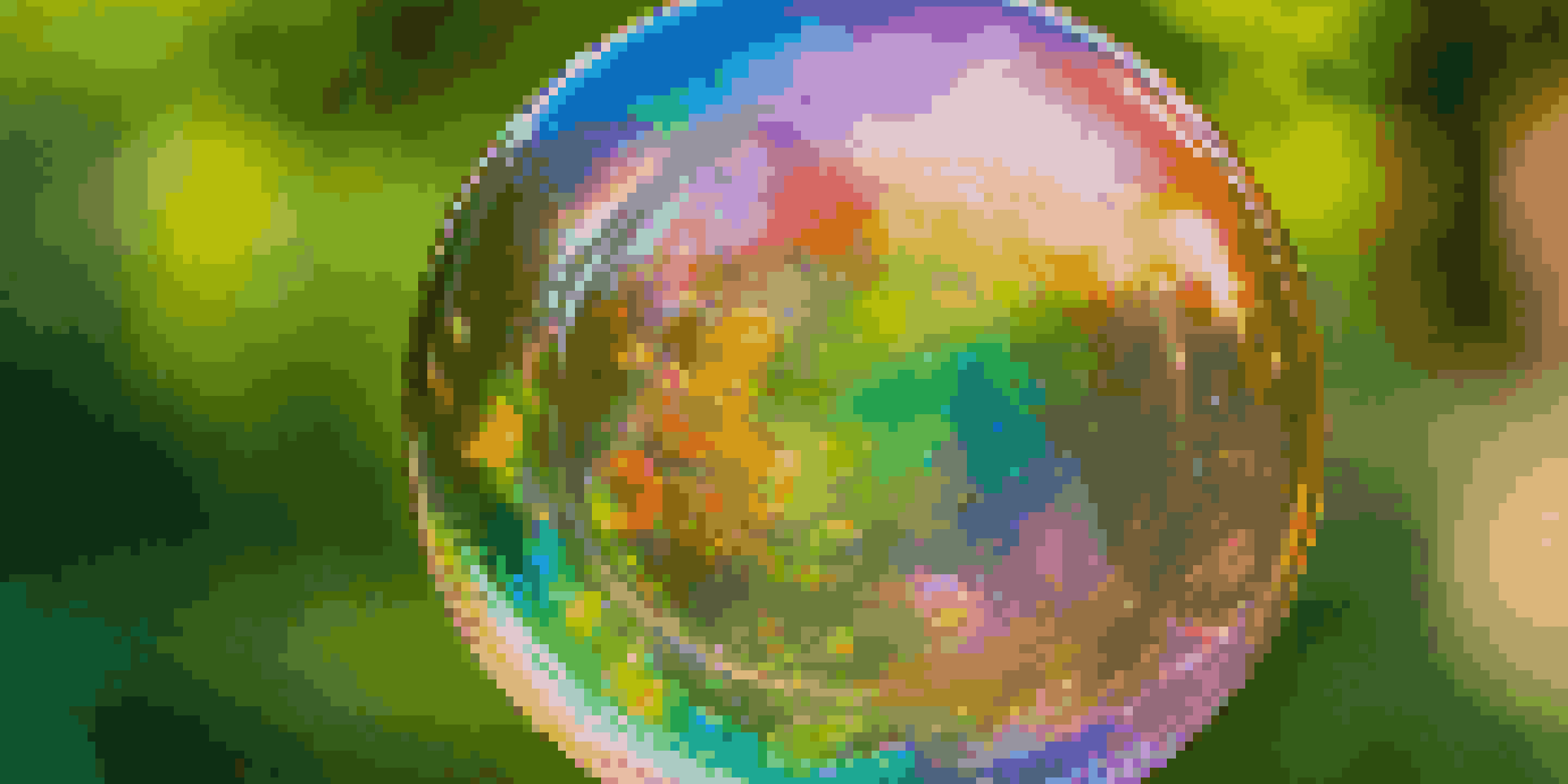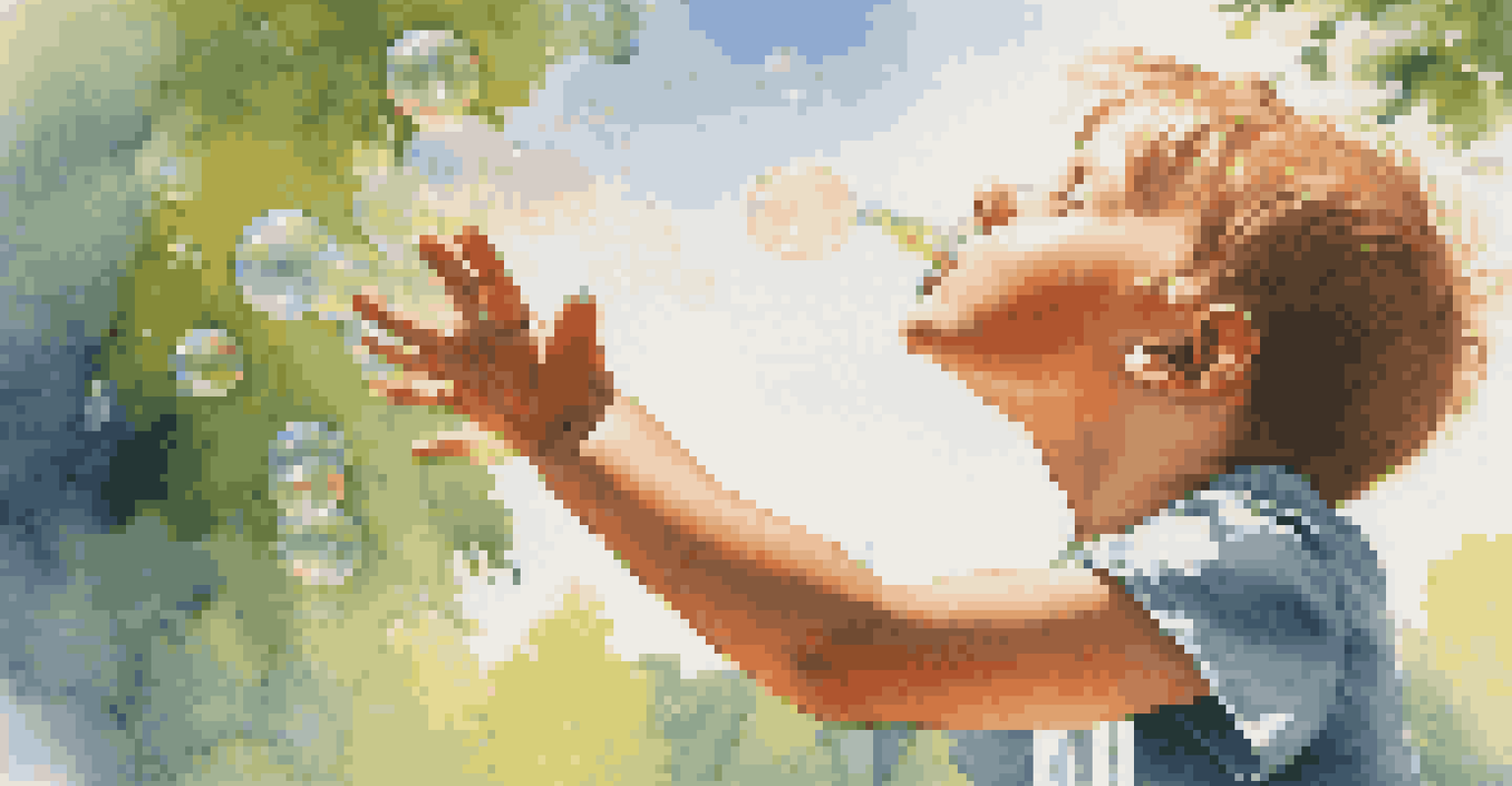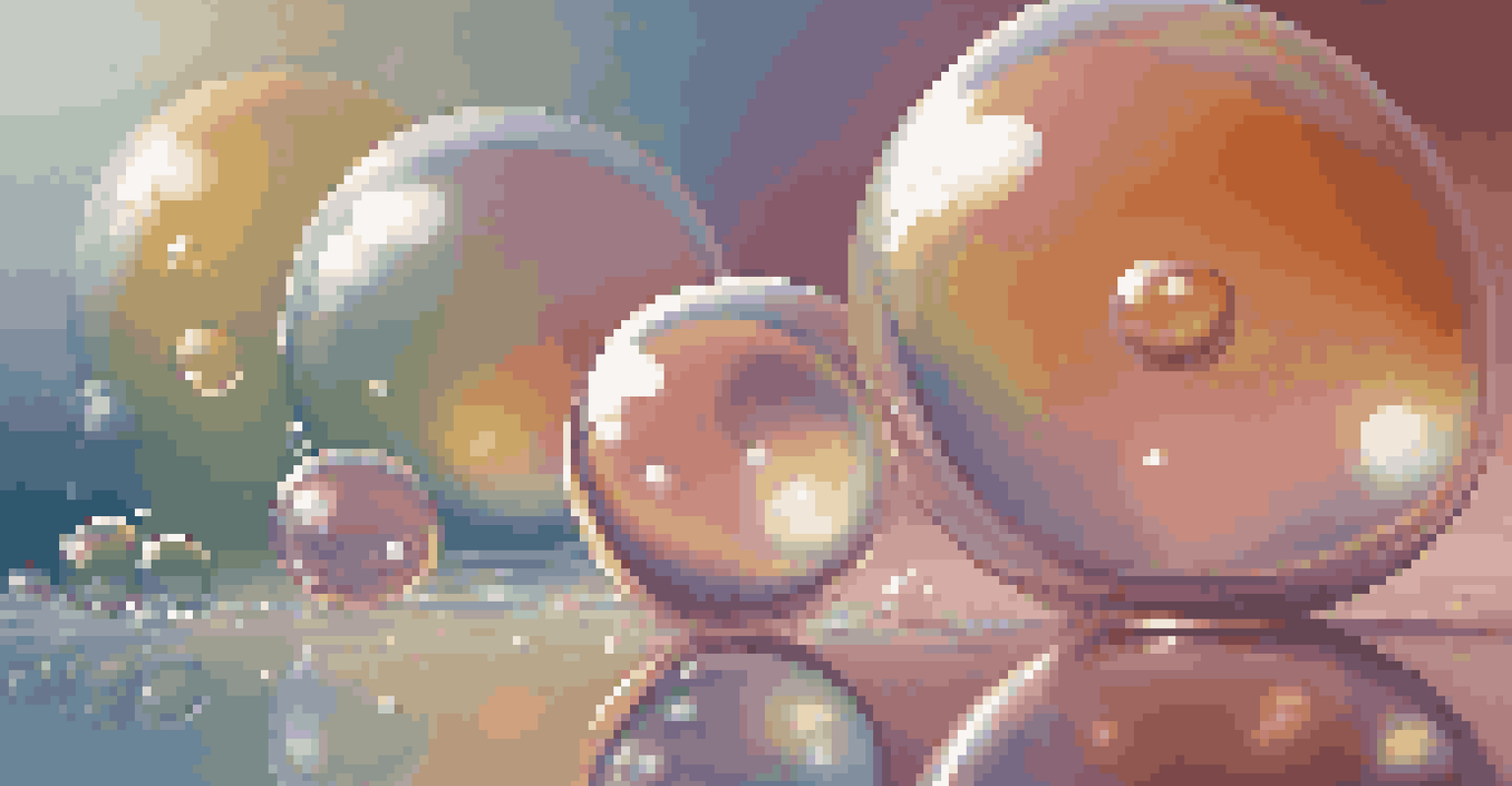The Science of Soap Bubbles: Understanding their Formation

What Are Soap Bubbles and Why Are They Fascinating?
Soap bubbles are delicate spheres of liquid that can captivate both kids and adults alike. They are formed when soap molecules trap air in a thin film of liquid, creating a colorful and often mesmerizing display. What makes these bubbles so fascinating is not just their beauty, but also the science behind their structure and behavior.
Science is simply the word we use to describe a method of organizing our curiosity.
The interplay of light and surface tension creates those stunning rainbow hues we see on the surface of a bubble. The thickness of the soap film determines the colors we observe, making every bubble a unique work of art. So, next time you blow a bubble, remember there's a science show happening right before your eyes!
Bubbles also remind us of the simple joys in life, sparking curiosity and wonder. They are a delightful intersection of art and science, making them a perfect topic for exploration in both educational settings and casual conversations.
The Ingredients: Soap and Water Combination
At the heart of every soap bubble are two main ingredients: soap and water. Soap molecules have a unique structure with two different ends; one loves water (hydrophilic) and the other repels it (hydrophobic). This dual nature allows soap to reduce the surface tension of water, enabling the formation of bubbles.

When you mix soap with water, the soap molecules arrange themselves into a thin film, trapping air inside. This film is incredibly thin, usually just a few micrometers thick, and it's what gives the bubble its spherical shape. The lower surface tension makes it easier for the bubble to expand and hold air.
Bubbles: A Blend of Art and Science
Soap bubbles captivate us not only with their beauty but also with the fascinating science behind their formation and behavior.
In essence, the combination of soap and water turns a simple liquid into a dynamic playground for physics and chemistry. The next time you see a bubble, you’ll appreciate the careful balance of these ingredients that allows such a magical phenomenon to occur.
The Role of Surface Tension in Bubble Formation
Surface tension is a key player in the formation of bubbles, acting as the 'skin' that holds them together. It refers to the cohesive forces between liquid molecules that create a barrier at the surface. For bubbles, this means that the liquid film wants to minimize its surface area, resulting in a spherical shape.
The important thing is not to stop questioning. Curiosity has its own reason for existing.
When a bubble forms, it reaches an equilibrium where the internal pressure is balanced by the surface tension. This balance is crucial as it prevents the bubble from collapsing under its own weight. The spherical shape is the most efficient way to minimize surface area, which is why all bubbles tend to be round.
Understanding surface tension helps explain why bubbles can float and why they pop when they come into contact with sharp objects or even certain substances. It's a fascinating peek into the world of physics that plays out every time you see a bubble drift through the air.
How Temperature Affects Bubble Stability
Temperature plays a significant role in the stability of soap bubbles. Warmer temperatures can cause the water molecules in the soap film to evaporate quicker, leading to thinner films and less stability. This is why you may notice that bubbles last longer on cooler days.
Conversely, colder temperatures can keep the water molecules in the film more stable. This allows bubbles to maintain their structure longer, but it can also make them more fragile. Think of it like a tightrope walker; the right conditions can help them maintain balance, while the wrong ones can send them tumbling.
Temperature Affects Bubble Stability
Warmer temperatures can lead to quicker evaporation in soap bubbles, making them less stable, while cooler temperatures tend to prolong their lifespan.
So, the next time you create bubbles, consider the weather! Understanding how temperature affects them adds another layer of appreciation to this simple yet complex activity.
Adding Glycerin: Enhancing Bubble Longevity
Have you ever wondered why some bubble solutions create longer-lasting bubbles? The secret often lies in adding glycerin to the mix. Glycerin is a thick, syrupy substance that helps to retain moisture in the soap film, slowing down evaporation.
When you mix glycerin with your soap solution, it strengthens the structure of the soap film, allowing bubbles to hold their shape for a longer time. This is especially useful for bubble enthusiasts who want to create bigger and more durable bubbles for parties or events.
By simply adding glycerin, you’re not just enhancing your bubble-making experience; you’re also engaging with the science of chemistry that keeps those bubbles afloat longer in your world of fun.
The Impact of Wind and Air Pressure on Bubbles
When it comes to bubbles, wind and air pressure can be both friends and foes. A gentle breeze can carry bubbles away, creating a whimsical dance in the air, while strong gusts can burst them in an instant. Understanding how air movement affects bubbles can enhance your bubble-blowing experience.
Air pressure also plays a crucial role. When bubbles rise, they encounter lower air pressure, which can cause them to expand. This is why you might see bubbles grow larger as they float higher. However, if the external pressure is too high, it can crush the delicate film of the bubble.
Glycerin Enhances Bubble Longevity
Adding glycerin to bubble solutions helps retain moisture and strengthens the soap film, allowing bubbles to last longer and maintain their shape.
So, the next time you’re outside blowing bubbles, take a moment to observe how the wind and air pressure interact with your creations. It’s nature’s way of reminding us how interconnected everything is, even in something as simple as a soap bubble.
The Joy of Bubbles: A Blend of Science and Fun
Ultimately, soap bubbles are a delightful fusion of science and joy. They serve as a playful reminder of the wonders of the natural world, captivating our imaginations while also teaching us about physics and chemistry. Whether you're a child or simply a kid at heart, bubbles bring a smile to everyone’s face.
Engaging with bubbles can inspire curiosity and exploration, encouraging us to ask questions about how they form, why they pop, and what makes them float. This simple activity can spark a lifelong interest in science for many, showing that learning doesn't have to be confined to textbooks.

So, the next time you blow a bubble, take a moment to appreciate not just its beauty but the rich tapestry of science woven into its existence. After all, bubbles are not just fleeting moments of joy; they are a celebration of the wonders that surround us every day.